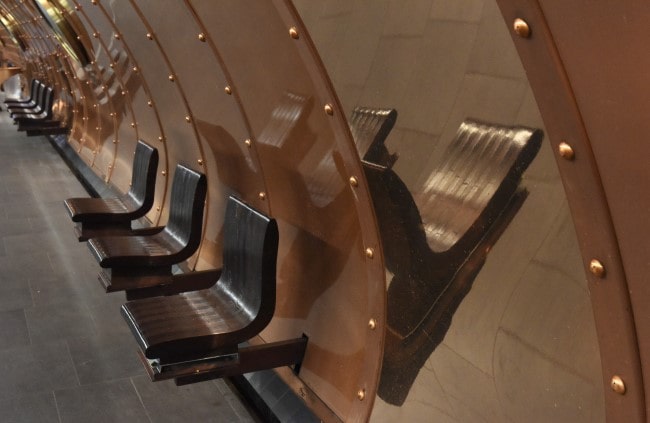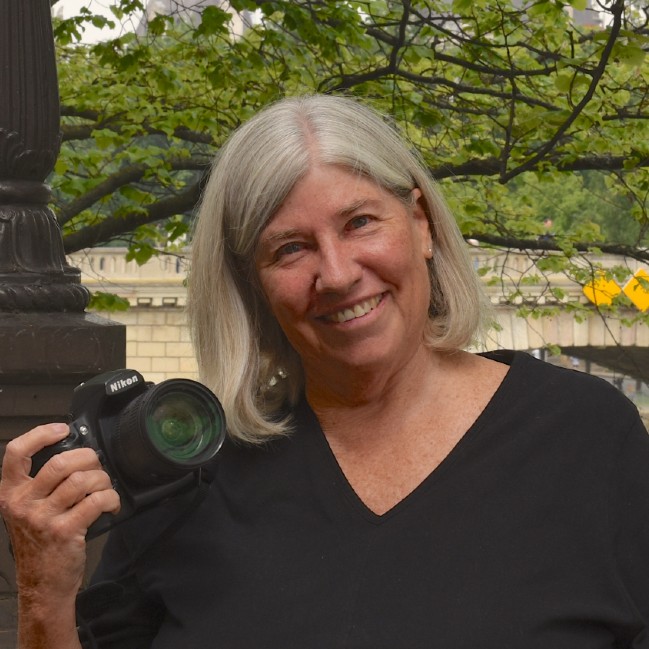Metro Magic: It’s a Wonderful World … of Copper
- SUBSCRIBE
- ALREADY SUBSCRIBED?
BECOME A BONJOUR PARIS MEMBER
Gain full access to our collection of over 5,000 articles and bring the City of Light into your life. Just 60 USD per year.
Find out why you should become a member here.
Sign in
Fill in your credentials below.
This is the fifth in a monthly series of stories about the wonders of the Paris Metro System.
Which Paris metro stations can you recognize with just one clue or glance?
Only a few stations are so unique that they can be identified in a flash. Arts et Métiers (Line 11) is one of those. With just one hint of copper glint, you know where you are . . . sort of.
Is it the past or the future? Is it visionary sci-fi or steampunk? Are you underwater or underground — or in a completely imaginary world?

The Line 11 Arts et Métier Station. © Meredith Mullins
One thing is sure. You are immersed in a metallic tunnel, where even the trash bins adhere to the copper theme. A time machine? Perhaps. You’re just not sure where on the continuum you’ve landed.
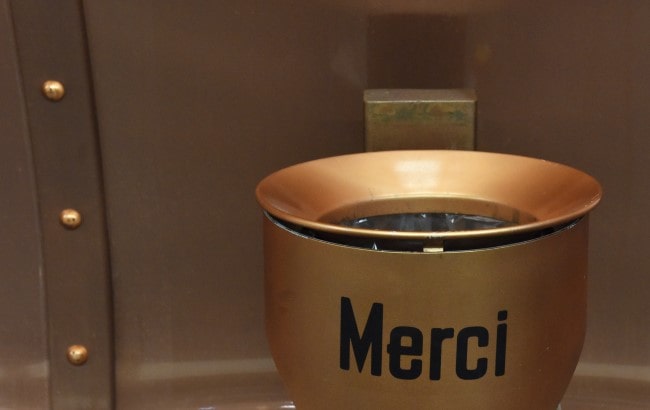
Even the trash bins speak copper. © Meredith Mullins
If you feel a Jules Verne Twenty Thousand Leagues Under the Sea vibe, you are on the same page as the station designer — who imagined these curved Nautilus submarine walls, giant cogs in the ceiling, and tiny portholes into a world of discovery.
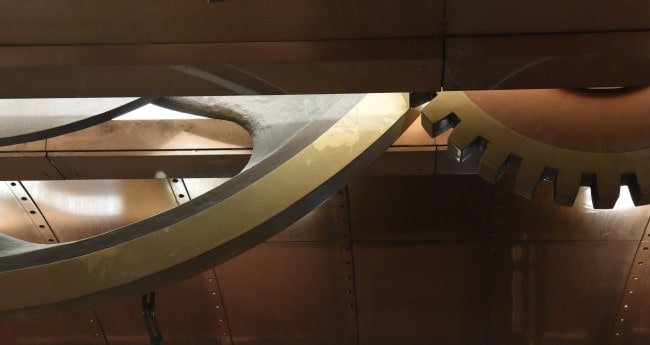
The cogs of industrial progress. © Meredith Mullins
Just as Captain Kirk (aka William Shatner) said recently on his Blue Origin voyage to the edge of space (compliments of Amazon’s Jeff Bezos): In such a mysterious world, you don’t want to look out the window and see something/someone staring back at you.
At Arts et Métiers, you peer into the portholes and get a peek into a history of humans’ inventions and innovations. Aside from the fact that the porthole windows need a good cleaning (Note to RATP), it’s a perfect introduction to the fascinating Musée des Arts et Métiers, just a few minutes from the metro station.
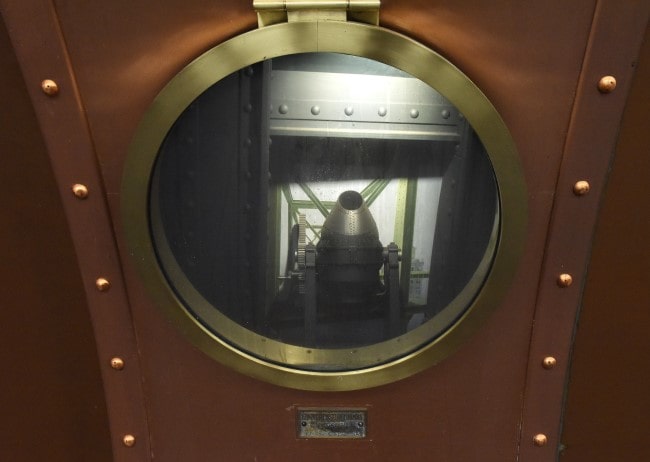
A Thomas Converter (for the mass production of steel) looks back at you through a porthole. © Meredith Mullins
Through the portholes, you’ll see an Armillary Sphere from the 18th century (a tool to show celestial motion), a model of the Telstar satellite from 1960, a waterwheel from the early 19th century, and an aerostat from the late 1800s (an aircraft lifted by buoyant gas), among other tiny surprises.
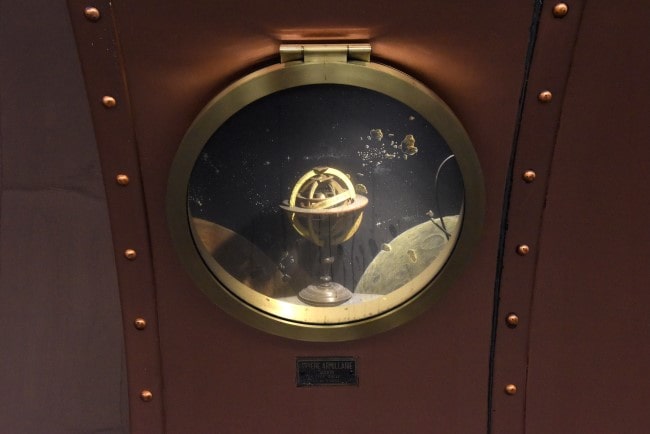
An Armillary Sphere from the 18th Century. © Meredith Mullins
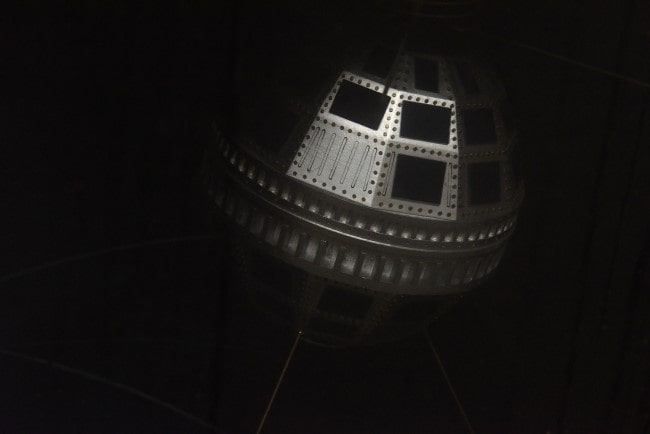
A model of the Telstar satellite from 1960. © Meredith Mullins
An added bonus: you’re not distracted by advertising. This Line 11 station has none.
The Station’s Namesake
The Conservatoire national des Arts et Métiers (CNAM) — translated as the national school of “Arts and Trades,” but technically now the national school of engineering —was opened in the Saint-Martin-des-Champs monastery in 1794 as a repository for scientific instruments.
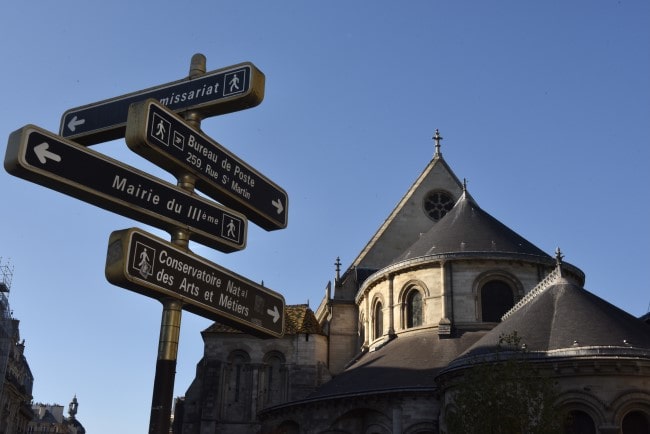
Just a few minutes from the metro, you’ll find the Musée des Arts et Métiers. © Meredith Mullins
CNAM now houses the Musée des Arts et Métiers, which presents amazing exhibits of the collection, including inventions from science, energy, materials, mechanics, construction, communication, and transport.
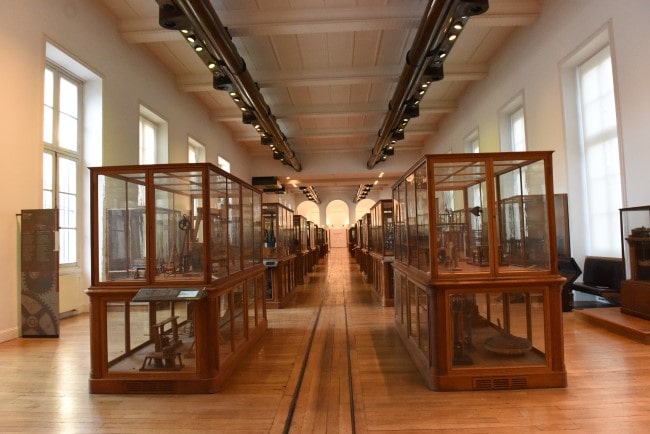
The fascinating story of human innovation. © Meredith Mullins
You can see the original Foucault pendulum, a model of Lavoisier’s Laboratory, the first model of the Statue of Liberty by Bartholdi, and some of the first planes, which look like prehistoric birds trying to escape through the ornately carved ceilings.
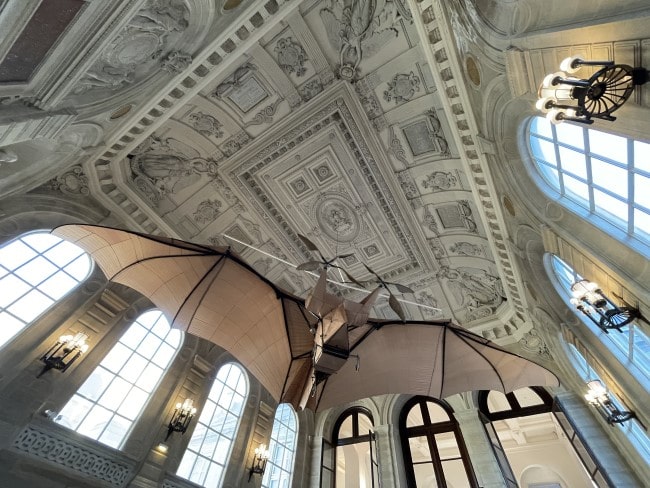
Early flight, presented in grand form. © Meredith Mullins
The Metro History
Arts et Métiers Line 3 opened in 1904 (as part of the Père Lachaise to Villiers line of the time), and Line 11 opened in 1935 (as part of the Châtelet to Porte de Lilas line). Both lines in this station were modernized in the late 1980s, with special attention and a complete redesign given to the Line 11 station in anticipation of the 200th anniversary of its namesake in 1994.
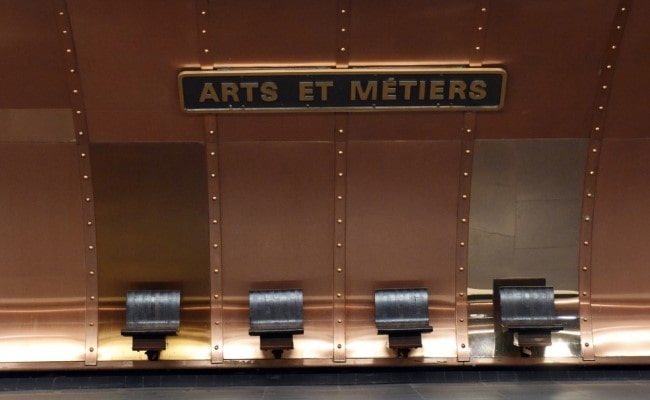
© Meredith Mullins
François Schuiten, the Belgian designer who was selected for the Line 11 project, was a perfect choice. Inspired by his architect parents and his love of Jules Verne, his passions were art and science. He worked on a comic series Les Cités obscures, translated in English as Cities of the Fantastic.
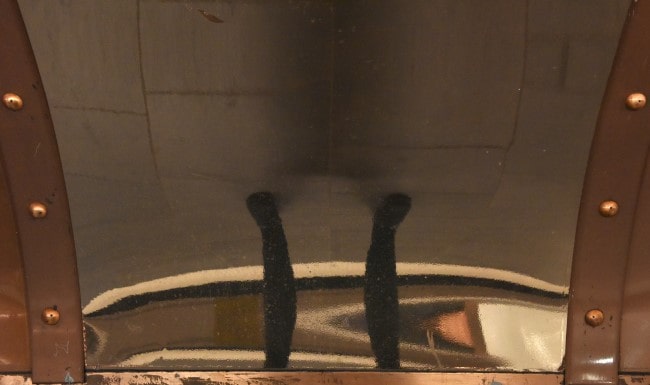
Some of the copper walls turn into funhouse mirrors. © Meredith Mullins
He brought both Jules Verne and “the fantastic” to the station’s design. Some have called it steampunk — a word I had to look up to find that it means “a genre of science fiction that has a historical setting and features steam-powered machinery.”
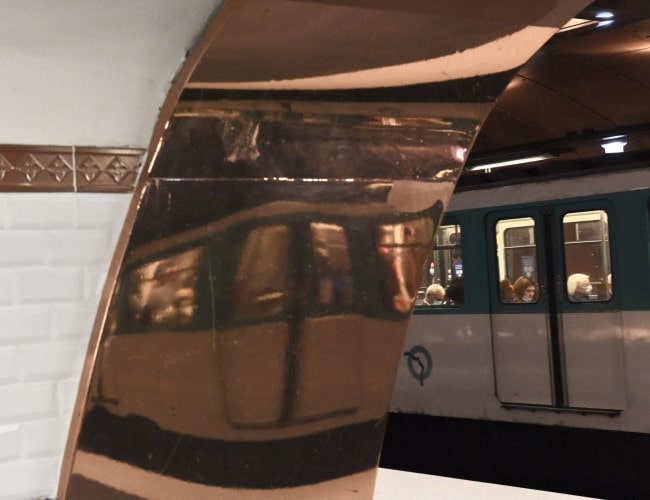
Merging reality with imagination. © Meredith Mullins
With such a striking design for Line 11, does Line 3 feel like the ugly stepsister? Perhaps. Line 3 is in the Oui-dire style, an approach that emerged to keep Paris a museum rather than a factory, as Charles Garnier said.
The Line 3 station has standard white tiles and green accented ad frames and chairs. But it also has a bit of flash in the overhead lighting panels supported by scythe-shaped structures and embedded with colored lights that subtly reflect on the white tiles.
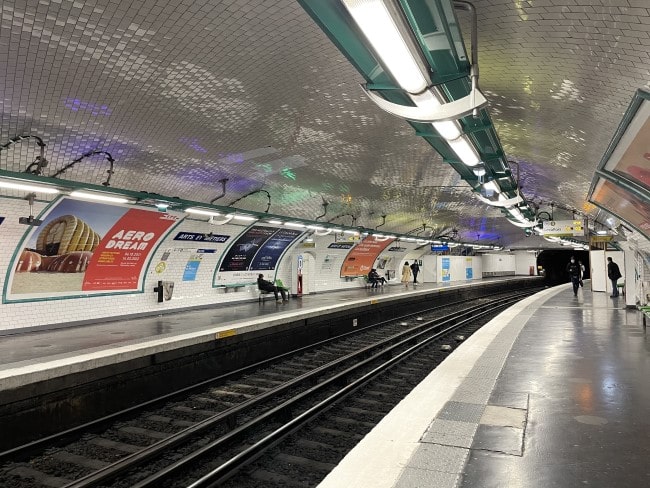
The Line 3 Arts et Métiers platforms. © Meredith Mullins
Take a Ride into Adventure
The Arts et Métiers station is worth a visit for its treasures underground and above —for the history of human’s inventiveness, for time travel into a copper world, and for the fastest metro ride on the network. Line 11 is a short line that lends itself to speed —the dream job of every metro driver with a Le Mans/Monaco racing heart.
You’ll get where you’re going . . . really fast.
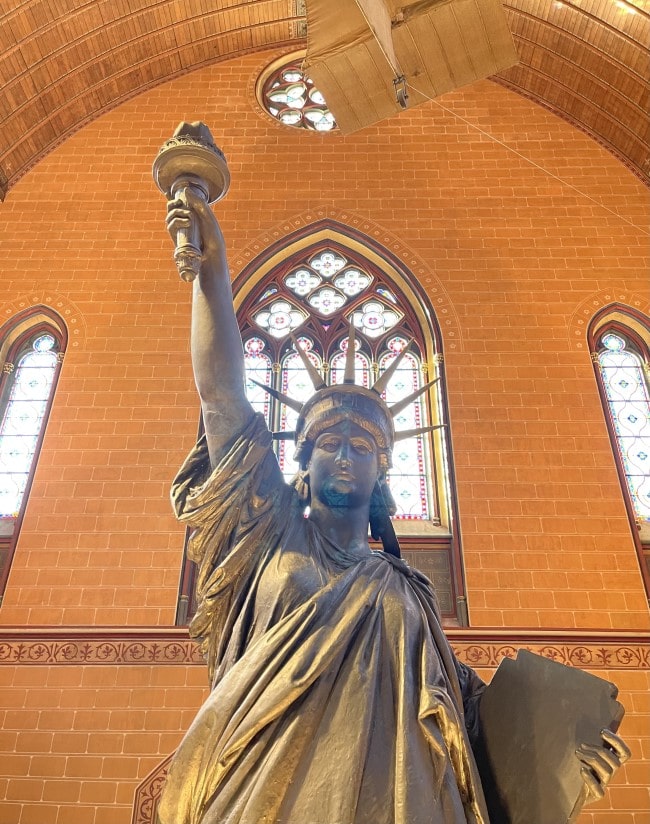
The original model for the Statue of Liberty (at the Musée des Arts et Métiers). © Meredith Mullins
The Musée des Arts et Métiers is open from Tuesday through Sunday from 10h00 to 18h00 (open until 21h00 on Fridays).
Lead photo credit : Arts et Metiers. © Meredith Mullins
More in Metro magic, Montmartre, Paris metro
